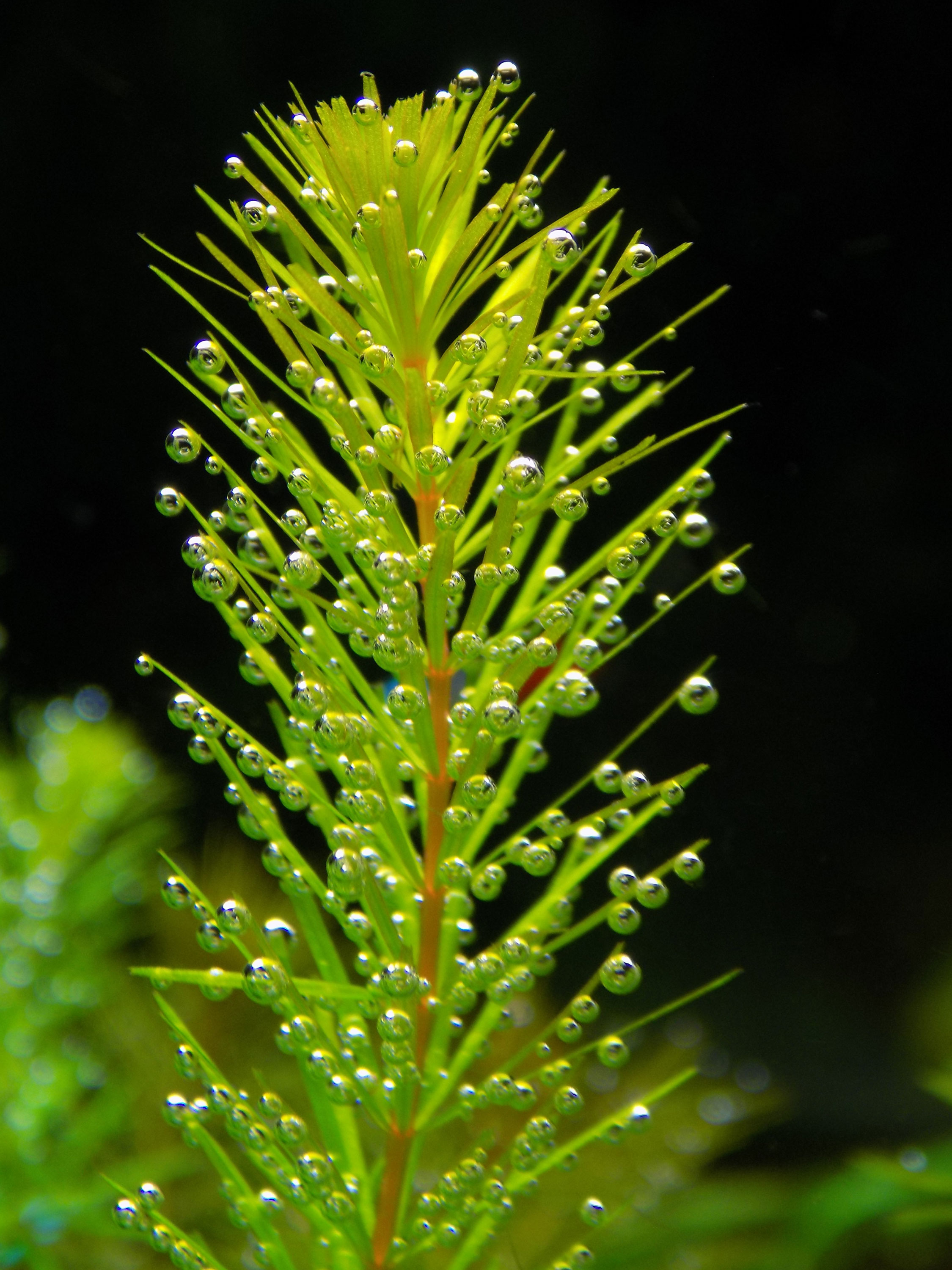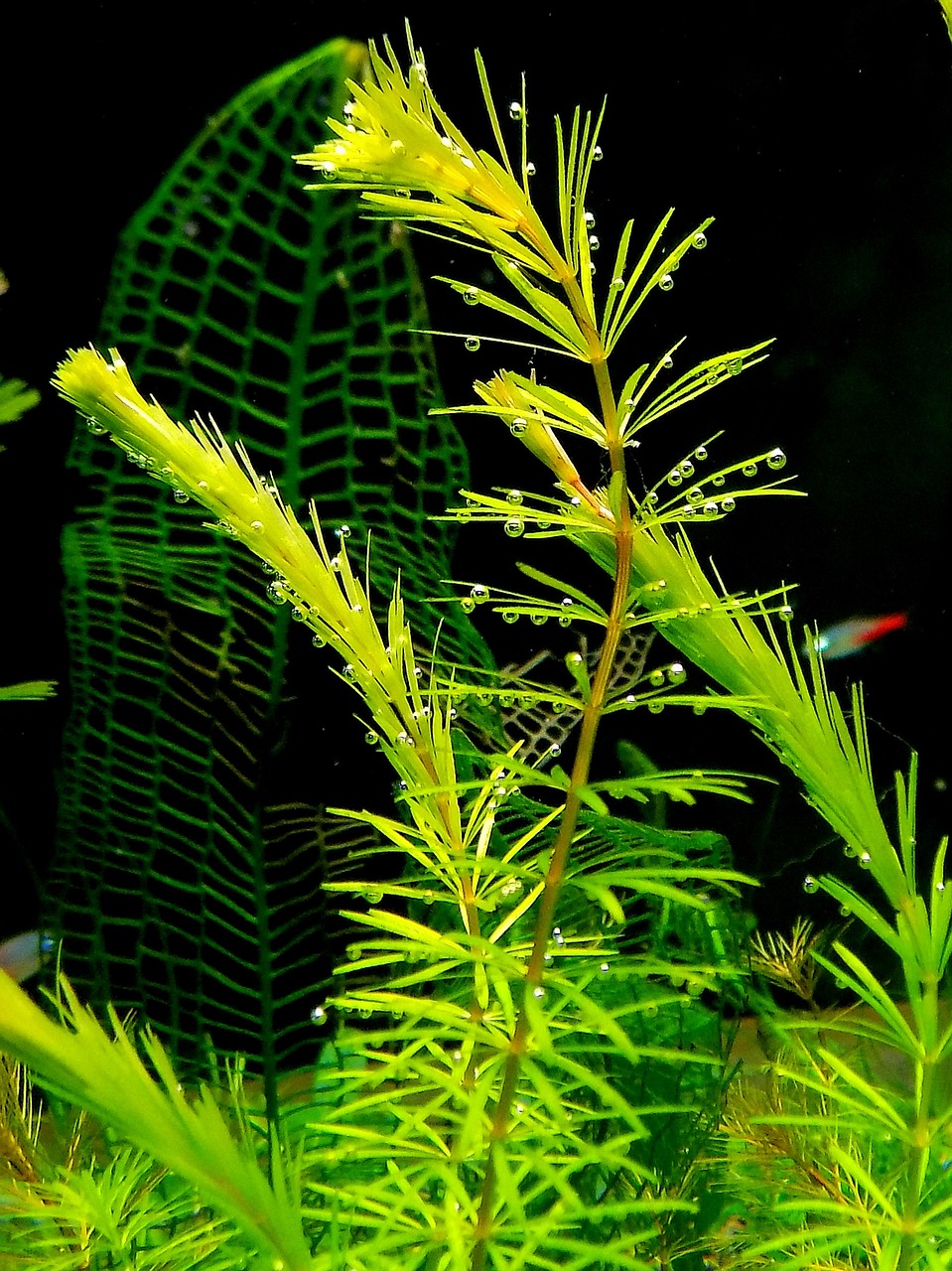Definition of nutrients / minerals
Nutrient elements are elements of the chemical periodic table that are essential for the nutrient and energy metabolism of plants.
Blog
Nutrient elements are elements of the chemical periodic table that are essential for the nutrient and energy metabolism of plants.
Nutrient elements are neither present in water nor in the plant in elemental form1). They form compounds with other elements and then form salts, which dissolve in water as charged ions (e.g. K++ Cl-) or uncharged molecules (e.g. CO2, H3BO3). Ions and molecules are collectively referred to as minerals (Finck, 1991).
Minerals are present in the water or in the water bed and can be taken up by aquatic plants via the leaf surface or the roots (Watson, 2007). The uptake of K, Ca, Mg, Cl and S minerals occurs mainly via the leaf surface, while minerals of P, Fe and other trace elements are mainly taken up by the roots(Walstad, 1999). Table 1 provides an overview of the elements essential for plant nutrition and their corresponding minerals.
Tab. 1 Main and trace elements and their corresponding minerals taken up by aquatic plants (from Finck, 1991)
|
Element |
Symbol |
Uptake as |
|
Main nutrients |
||
|
Carbon |
C |
Gas, carbonate ion2) |
|
Oxygen |
O |
water |
|
Hydrogen |
H |
water |
|
Nitrogen |
N |
ion |
|
Phosphorus |
P |
ion |
|
Potassium |
K |
ion |
|
Sulphur |
S |
ion |
|
Magnesium |
Mg |
ion |
|
Chlorine |
Cl |
ion |
|
Trace elements |
||
|
Iron |
Fe |
ion |
|
Manganese |
Mn |
ion |
|
Zinc |
Zn |
ion |
|
copper |
Cu |
ion |
|
Boron |
B |
Ion/molecule |
|
Molybdenum |
Mo |
ion |
If we look at the chemical structure of plants, we can distinguish between two basic building blocks. Plant biomass consists of 90 % complex compounds of the elements carbon (C), oxygen (O) and hydrogen (H). Compounds of these elements are also known as organic compounds.
Organic compounds include the structural plant framework (e.g. cell walls), storage substances (e.g. starch) and energy sources (e.g. sugar). What organic compounds have in common is that they can be completely burnt to carbon dioxide (CO2) and water (H2O). They are formed by photosynthesis and subsequent physiological processes in the plant from their basic elements with the co-operation and incorporation of other nutrients.
Explanations
1) Humans generally consume iron as a food supplement in the form of salts and not as a metal
2) from Walstad (1999)
ALU (2003):
http://www.umweltschutz-sh.ch/NEU_06NOV02/Umweltschutz/Wasser/OW/OW-Rhein-Kalkausscheidung Juni03-5-6-03.pdf. Amt für Lebensmittelkontrolle und Umweltschutz des Kantons Schaffhausen, Schaffhausen.
Barr, T. (2005):
Non CO₂-Methods, Another Method for Different Goals. http://www.AquaticPlantNews.com/tombarrnon-co2.htm.
Bergmann, W. (1992):
Nutritional Disorders of Plants -Development, Visual and Analytical Diagnosis-. Gustav Fischer, Jena, Stuttgart, New York.
BEW (2005):
Chemisch-physikalische Trinkwasseruntersuchung in Anlehnung an § 14 Abs. 1 bzw. 3 (Indikatorparameter) der TWVO vom 21. Mai 2001. Jahresdurchschnittswerte 2005. Bayreuther Energie und Wasserversorgungs GmbH, Bayreuth.
Buddendorf, C. (2003):
Free of Algae with Redfield Ratio
Finck, A. (1991):
Pflanzenernährung in Stichpunkten. Hirts Stichwortbücher. Gebrüder Bornträger, Berlin, Stuttgart.
Institut für Umweltverfahrenstechnik, Universität Bremen (o. A.):
WasserWissen - Das Internetportal für Wasser und Abwasser. Wasserhärte.
Jacobsen, N. (1979):
Aquarium Plants. Blandford Press Ltd, Poole.
Krause, H.J. (1985):
Aquarienwasser -Diagnose und Therapie-. Frankh’sche Verlagshandlung, Stuttgart.
Kremser, A. (o. A.):
Aquariendünger
Krombholz, P. (1998):
Nutrient Deficiency
Deficiency/toxicity symptoms by krombhol/teclink.net (Paul Krombholz) (Fri, 6 Feb 1998)
Larcher, W. (1994):
Ökophysiologie der Pflanzen. Eugen Ulmer, Stuttgart
LUBW (1999):
Das Kohlensäure-Gleichgewicht und die biogene Entkalkung. http://www.xfaweb.baden-wuerttemberg.de/nafaweb/berichte/s_bio12/bio120009.html . Landesanstalt für Umwelt, Messung und Naturschutz des Landes Baden-Würtemberg, Karlsruhe.
Marschner, H. (2002):
Mineral Nutrition of Higher Plants. Academic Press, San Diego.
Mayland, H.J. (1985):
Süßwasseraquarium. Falken-Verlag, Niedernhausen.
Nultsch, W. (1996):
Allgemeine Botanik, Georg Thieme, Stuttgart, New York.
Pedersen, O., Christensen, C. und T. Andersen (o. A.):
CO2 and light stimulate the growth http://www.tropica.com/article.asp?type=aquaristic&id=142
Schmidt, G. (1985):
Das richtige Aquarienwasser -Einführung in die Aquarienchemie-. Albrecht Philler, Minden.
Schulze, E.D., Beck, E., und K. Müller-Hohenstein (2002):
Pflanzenökologie. Spektrum Verlag, Heidelberg, Berlin.
Tunze, N. ,Sarbacher, J., Tunze, A. und F.J. Wichowsky (1994):
Beiträge zur Aquarienökologie - Die Wirkungsweise Biotechnischer Wasserpflege. Penzberg.
Untergasser, D. (1989):
Handbook of fish diseases. T.F.H. Publications, Inc., Neptune City.
Walker, N. A.; Smith, N. A. and I. R. Cathers (1980):
Bicarbonate assimilation by fresh-water charophytes and higher plants: I. Membrane transport of bicarbonate ions is not proven. Journal of Membrane Biology Bd. 57(1). Springer Verlag, New York.
Walstad, D. (1999):
Ecology of a Planted Aquarium - A Practical Manual and Scientific Treatise for Home Aquarist. Echinodorus Publishing, Chapel Hill.
Watson, G. (2007):
Greg Watsons’ Guide to Dosing Strategies. AGA. http://www.AquaticPlantNews.com
Wilstermann-Hildebrand, M. (o. A.):
Pflanzenernährung - Nährstoffversorgung von Pflanzen



